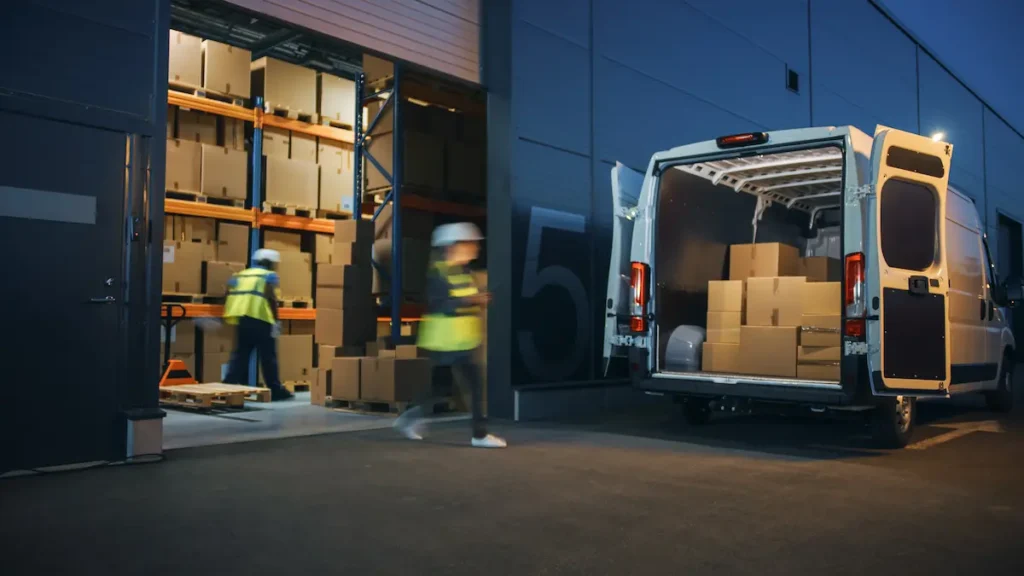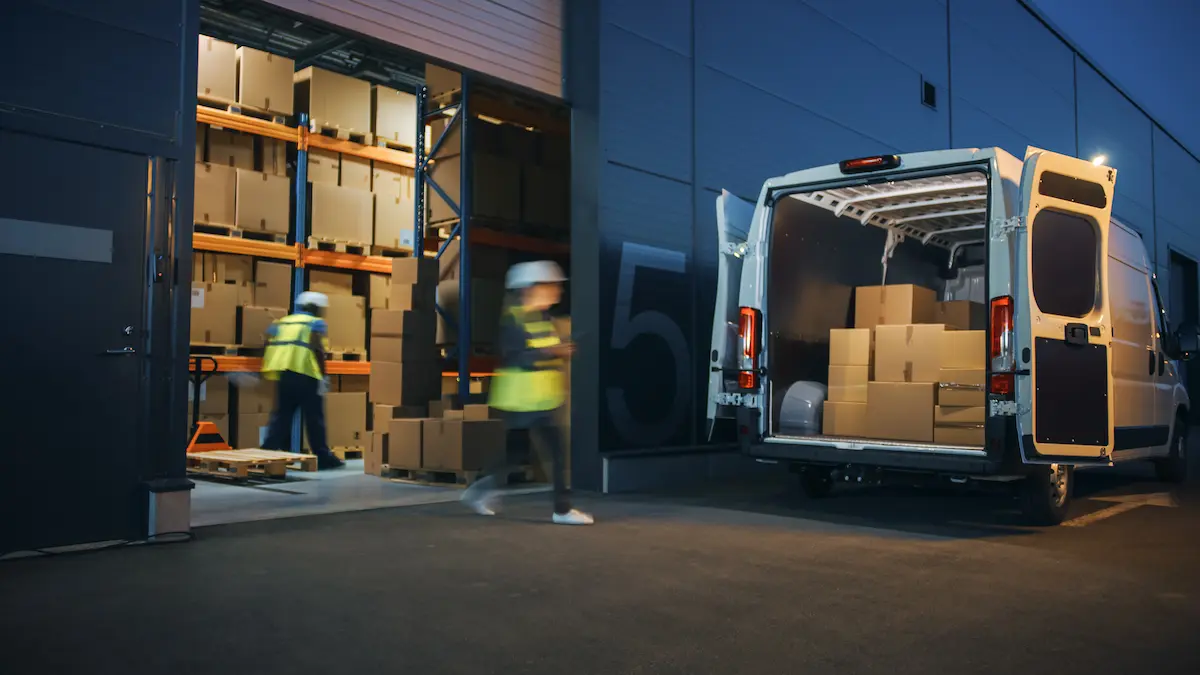A shipment goes through several phases of delivery, categorized and delineated as “miles” before it lands in the hands of the final customer.
In order to facilitate smooth and continuous delivery of these goods and keep the cogs of the system running, understanding each phase and choosing the type of truck best suited for that particular part is imperative.
Understanding the Supply Chain
This multifaceted supply chain encompasses several pivotal stages, each wielding a significant influence over the efficacy of the distribution process.
The Commencement ─ First Mile – Outbound Logistics
Our journey begins with the initial phase, known as “outbound logistics.”
Within this phase, the primary mission revolves around the transportation of goods from their source, which may encompass the manufacturer or supplier, to a distribution center or a central transportation hub.
This stage predominantly focuses on the consolidation and rigorous preparation of shipments, assuring their peak condition as they commence their forthcoming voyage.
The Intermediate Link ─ The Middle Mile’s Vital Role

Source: zetes.com
Following this, our attention shifts to the middle mile, a pivotal facet responsible for overseeing the seamless transition of goods among various distribution centers, hubs, or designated facilities.
The middle mile functions as an edifice in the supply chain, facilitating the unhindered flow of products from their initial collection point to their ultimate terminus, which may encompass another distribution center or a retail establishment.
The intricacy of this intermediate stage is characterized by the coordination of multiple carriers and the utilization of diverse transportation modes, encompassing trucks, trains, and even air freight.
The Crucial Culmination ─ Last Mile Delivery
Lastly, we arrive at the pivotal juncture of last mile delivery, where goods conclude their journey at their ultimate destination, which may comprise a retail outlet, a customer’s doorstep, or a designated business locale.
The domain of last mile logistics, renowned for its intricate challenges and notable cost implications, demands meticulous orchestration to meet and exceed customer expectations regarding both promptness and precision.
Strategic Optimization for Triumph at Every Stage
For a comprehensive grasp of the supply chain for mile delivery trucks, optimizing each stage with an unwavering focus on efficiency, cost-effectiveness, and an unwavering commitment to customer satisfaction is imperative.
Maxim Inc is a truck and trailer retailer that has a plethora of trucks available that are suited for all miles of delivery.
In the pursuit of this goal, companies must strategically allocate resources toward technological enhancements, infrastructure development, and the adept management of logistics.
Key Differences between the Three Different Miles

Source: freightwaves.com
Let’s take a look at four different parameters across which the three miles of delivery within the supply chain differ significantly. These include:
Geographical Scope
The first mile sets the journey in motion by managing the initial transportation of goods from manufacturers or suppliers to distribution centers or transportation hubs, typically within a confined regional boundary.
In contrast, the middle mile extends its reach, encompassing the movement of goods across a broader geographical expanse involving multiple distribution centers, hubs, or facilities.
Conversely, the last mile fine-tunes its focus to the ultimate destination, giving priority to the direct delivery of goods from distribution centers or local hubs to end consumers, often situated in neighborhoods or urban areas.
Means of Transport
In this scenario, the first mile relies heavily on larger trucks, freight carriers, and bulk transportation methodologies to convey goods from manufacturers or suppliers to distribution centers or transportation hubs.
In contrast, the middle mile presents a wider spectrum of transportation options, encompassing trucks, trains, and occasionally even air freight, with the choice contingent upon factors such as travel distance and the accessibility of infrastructure.
Finally, the last mile delivery phase adopts a unique strategy, employing smaller vehicles like vans and occasionally exploring alternative non-motorized modes such as bicycles or electric scooters.
Challenges Present
When delving into the intricacies and challenges that characterize each phase of the supply chain, it is crucial to recognize their distinct attributes.
The first mile primarily concentrates on inventory consolidation and initial quality assessments, involving fewer intricacies directly associated with delivery processes.
In contrast, the middle mile introduces complexities related to logistics coordination and intermodal transitions, often necessitating the implementation of efficient inventory management systems to ensure seamless operations.
Lastly, the last mile emerges as the most demanding phase, marked by challenges such as urban congestion, the need for precise route optimization, and the imperative to adhere to customer-specific delivery timeframes.
Financial Considerations

Source: businessleader.co.uk
Within this context, the first mile typically enjoys the advantage of lower transportation costs per unit, primarily due to the efficiencies derived from bulk shipments.
In contrast, the middle mile exhibits transportation costs that can vary from moderate to high, contingent on factors such as travel distance and the selected mode of transport.
The last mile stands out as the most financially demanding stage, primarily due to the necessity for highly localized, customer-centric services.
Costs associated with negotiating congested urban areas, implementing precise route optimization, and accommodating customer-specific delivery requirements collectively contribute to the heightened expenses encountered during the last mile of the supply chain.
Technology Utilized
When optimizing the supply chain at the first mile, inventory management and quality control solutions are typically used. These tools support effective inventory management while guaranteeing product quality.
As we enter the middle mile, route planning software, intermodal tracking, and data analytics are essential components of cargo management. These technologies make efficient management of commodities during transit possible, increasing overall productivity.
Advanced technology, like GPS tracking, smartphone apps, and even delivery drones, are used in the final mile. Together, they boost productivity while providing customers with real-time updates and improving the delivery process.
In the last stage of the supply chain, this nexus of technology and logistics is essential for meeting customer expectations.
The fact that each mile of delivery is of paramount importance to ensure the seamless operation of the supply chain warrants a close scrutiny of the nuanced differences that separate them.























